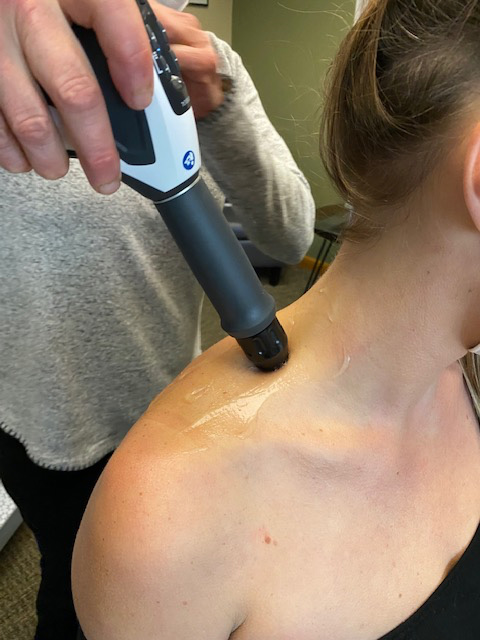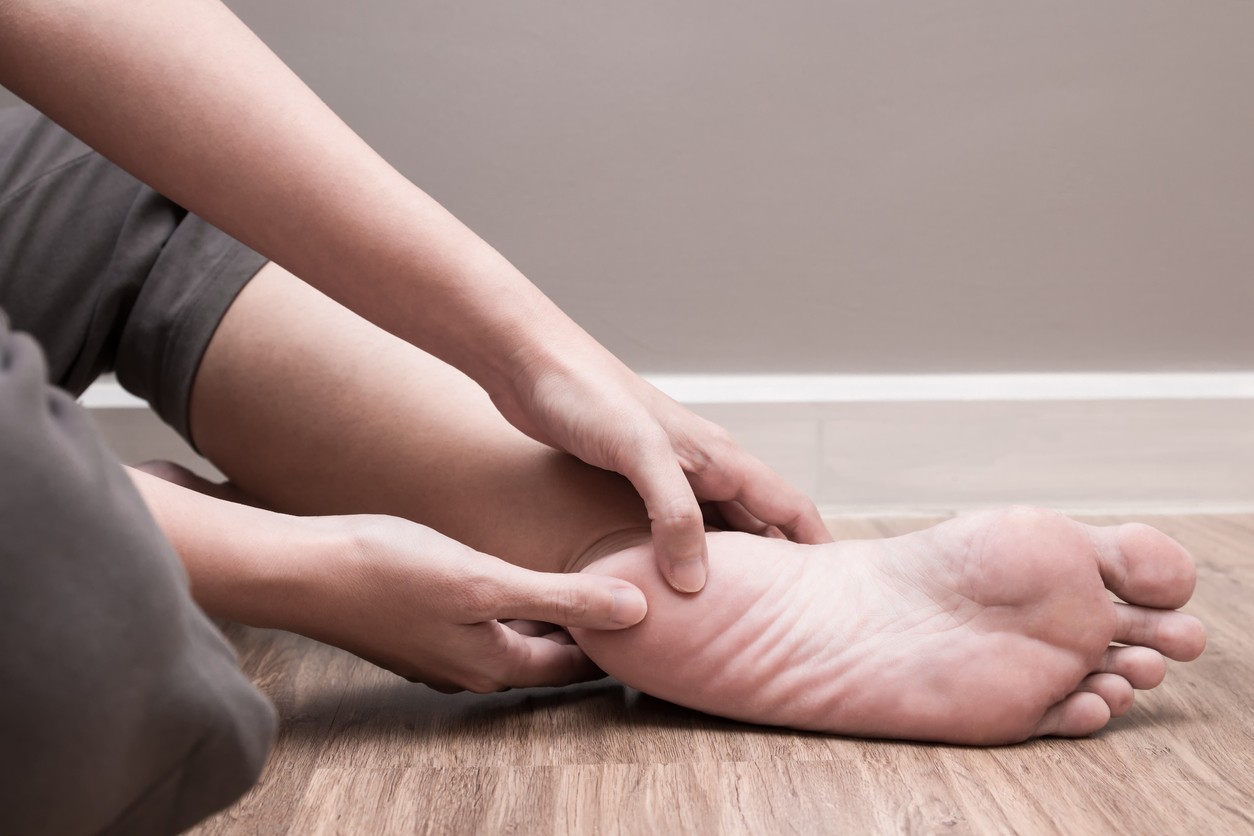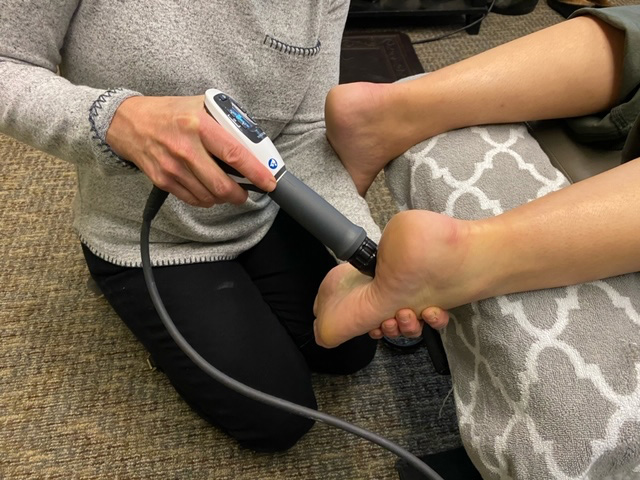From Stress Fractures to Strains: Speeding Up Recovery with Shockwave Therapy
In the world of sports and fitness, injuries are almost par for the course. As athletes push their limits, the body sometimes responds with musculoskeletal injuries. Traditional sports medicine methods, while effective, often come with prolonged recovery periods. Enter shockwave therapy—a game-changing approach that’s revolutionizing rehabilitation for sports and overuse injuries. Let’s dive deep into this transformative treatment.
Decoding Shockwave Therapy

Shockwave therapy, also known as extracorporeal shock wave therapy (ESWT), is a non-invasive therapeutic technique. Your chiropractor uses as handheld device that emits high-energy acoustic waves, which are transmitted through the skin and into the injured soft tissues of the affected area. These sound waves stimulate healing, reduce pain, and promote cellular repair and growth.
The principle is fascinating. The body, when subjected to these shockwaves, responds with increased metabolic activity around the pain site. This accelerates the healing process by increasing blood flow and stimulating cell regeneration.
h2: Why Shockwave Therapy is Making Waves in Sports Rehabilitation
The adoption of shockwave therapy in sports rehabilitation owes to its myriad of benefits:
- Speedy Recovery: It accelerates the body’s self-healing mechanisms.
- Non-Invasive Treatment: No surgeries, no incisions. Just a handheld device that sends waves through the skin.
- Minimized Reliance on Medication: Often reduces or eliminates the need for painkillers, anti-inflammatory drugs or steroid injections.
- Few Side Effects: Apart from minor discomfort or redness, patients usually don’t experience side effects.
Targeted Treatment: Sports and Overuse Injuries Shockwave Can Tackle
Tennis and Golfer’s Elbow

Medically termed as lateral and medial epicondylitis, tennis elbow and golfer’s elbow are common sports injuries. The overuse of forearm muscles results in pain and inflammation at the elbow joint. Shockwave therapy focuses on these pain points, promoting healing and reducing inflammation. The shockwaves stimulate collagen production, an essential component for tendon repair.
Plantar Fasciitis

Runners and jumpers often complain of heel pain, attributed to plantar fasciitis. This inflammation of the fibrous tissue along the bottom of the foot can be stubborn. But with shockwave therapy, there’s hope. The therapy stimulates blood flow in the injured area, which in turn accelerates tissue repair and cellular growth and results in pain relief.
Achilles Tendinitis

This is the inflammation of the Achilles tendon, the thick band connecting calf muscles to the heel bone. Persistent strain from running or jumping can cause this painful musculoskeletal condition. Shockwave therapy, when applied, can break down injury-induced calcifications in the tendon, offering relief and fostering tendon healing.
Prepping for a Shockwave Therapy Session: What to Expect

Venturing into the realm of shockwave therapy? Here’s a glimpse into what awaits:
Pre-Treatment Consultation
Before starting treatment, patients typically undergo an evaluation. This helps the chiropractor understand the nature and extent of the injury. They might also discuss medical history to ensure shockwave therapy is a suitable non-surgical treatment.
During the Session
The actual procedure is relatively short, often lasting 5-10 minutes. A gel is applied to the treatment area, ensuring the shockwaves are efficiently transmitted. The handheld device is then placed against the skin, sending pulses to the injured tissues. While there might be some discomfort, it’s typically bearable and lasts only during the session.
Post-Treatment Recommendations
Post-procedure, patients are usually advised to rest the treated area and avoid strenuous exercise for a few days before getting back to daily activities. While some might experience immediate relief, others might need a few sessions before discerning significant improvements.
Shockwave Therapy Considerations
Shockwave therapy, while beneficial, is not a one-size-fits-all solution. It’s important to discuss this treatment option with your chiropractor.
- Understand the Limits: While shockwave treatment can address many sports injuries, it might not be the solution for all conditions.
- Adhere to Advice: Follow post-treatment recommendations for optimal results.
EPAT shockwave therapy stands as a testament to the power of medical innovation. It offers a non-invasive, effective treatment to the age-old problem of overuse injuries and helps athletes of all types get back to the sports they love more quickly. Contact us at Total Body Chiropractic today to learn how shockwave therapy can benefit you.
Shockwave Therapy FAQs:
- Is shockwave therapy suitable for all age groups?
- Generally, yes. However, its appropriateness can depend on individual health conditions and the specific injury. Always consult with a therapist before beginning treatment.
- How many sessions of shockwave therapy might I need?
- The number of sessions varies based on the injury’s severity. Some might need as few as three, while others might require more.
- Are there any long-term side effects of shockwave therapy?
- Currently, no long-term side effects have been identified. However, some might experience temporary redness or swelling post-treatment.
- Can shockwave therapy prevent future injuries?
- While it can effectively treat existing injuries and strengthen tissues, it’s essential to combine therapy with proper training and exercises to minimize future injury risks.
- How soon after an injury can I start shockwave therapy?
- It’s best to consult with a therapist. In some cases, immediate treatment might be beneficial, while in others, it’s advisable to wait.

